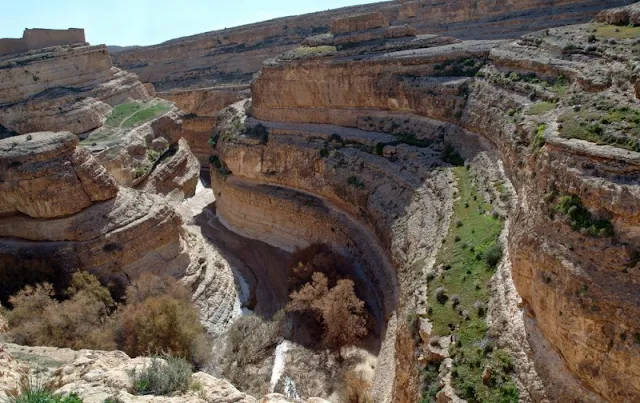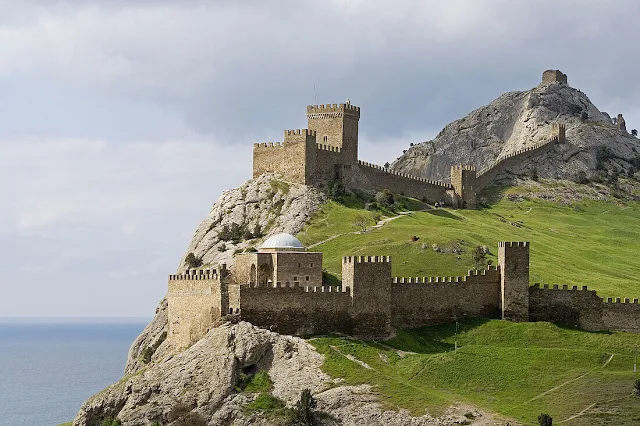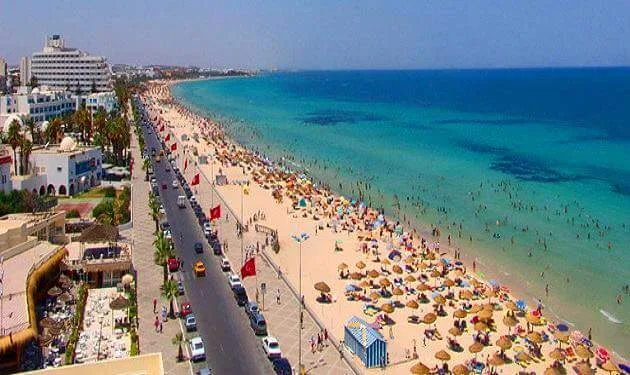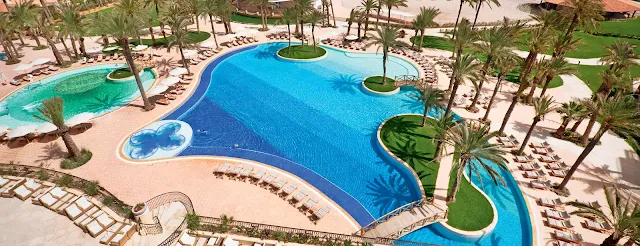Tourism in Tunisia
Introduction
Tunisia is a country rich in history, culture, and natural beauty. Located at the crossroads of the Mediterranean and North Africa, it has been a melting pot of civilizations for thousands of years. From ancient Phoenician and Roman ruins to Islamic architecture and stunning Mediterranean beaches, Tunisia offers a diverse array of attractions that cater to history enthusiasts, culture lovers, and nature seekers alike. This article will explore some of the most important landmarks in Tunisia, discussing their historical significance and how to reach them.
1. Carthage: The Ancient Phoenician Powerhouse
Key Sites to Visit
- Antonine Baths: These are the largest Roman baths in Africa and offer stunning views of the Mediterranean.
- Byrsa Hill: The ancient heart of Carthage, where visitors can see remnants of Punic and Roman structures.
- The Punic Ports: Once a major naval base, these ports are an important part of Carthaginian history.
Accommodations
- Villa Didon Hotel & Spa (Luxury)Price: HighThis boutique luxury hotel offers stunning views of Carthage's ruins and the Mediterranean. It includes a spa and fine dining services.
- Carthage Thalasso Resort (Mid-range)Price: ModerateThis resort features a private beach, pool, and spa, making it perfect for travelers seeking comfort with a touch of luxury.
- Ibis Tunis (Budget)Price: LowA budget-friendly hotel offering comfortable accommodations, located a short drive from Carthage.
Dining Options
- Dar El Jeld: A traditional Tunisian restaurant offering dishes like couscous and lamb.
- Le Golfe: A seaside restaurant known for Mediterranean and seafood cuisine.
2. El Jem: The Roman Colosseum of North Africa
Key Sites to Visit
- The Amphitheatre: The main attraction, visitors can explore the entire amphitheater, from the arena floor to the upper tiers. The underground passages, where gladiators and animals were kept before events, are particularly fascinating.
- El Jem Museum: Located near the amphitheater, this museum houses a collection of Roman mosaics and artifacts from the surrounding area.
Accommodations
Hotel Julius (Mid-range)
Price: Moderate
A comfortable hotel located near the amphitheater, ideal for history enthusiasts.Dar Dhiafa (Budget)
Price: Low
A traditional guesthouse offering affordable lodging with an authentic Tunisian ambiance.
Dining Options
- Restaurant Le Nomade: Specializes in Tunisian dishes such as grilled lamb and couscous.
- Café El Hana: A quaint café near the amphitheater, perfect for light snacks and drinks.
3. Sidi Bou Said: The Artist's Paradise
Key Sites to Visit
- Café des Nattes: One of the most famous cafés in Tunisia, offering stunning views of the sea and a perfect spot to enjoy traditional mint tea.
- Dar El Annabi: A traditional Tunisian house that has been converted into a museum, showcasing the architecture and lifestyle of the town’s inhabitants.
- Ennejma Ezzahra Palace: This palace, built by a French artist in the early 20th century, is now a center for Arabic and Mediterranean music and houses a museum of traditional instruments.
Accommodations
La Villa Bleue (Luxury)
Price: High
A luxury boutique hotel offering panoramic views of the Mediterranean Sea and top-notch services.Hotel Bou Fares (Budget)
Price: Low
A simple, charming guesthouse offering comfortable, affordable stays.
Dining Options
- Café des Délices: Famous for its breathtaking views and traditional sweets and drinks.
- Le Pirate: A seafood restaurant known for its fresh catches of the day.
4. Kairouan: The Spiritual Heart of Tunisia
Key Sites to Visit
- The Great Mosque of Kairouan: One of the oldest and most impressive mosques in North Africa, it features a massive courtyard, a stunning prayer hall, and a distinctive minaret.
- The Aghlabid Basins: These large pools were built in the 9th century to store water for the city and are an engineering marvel of their time.
- Mausoleum of Sidi Sahbi: Also known as the Barber’s Mosque, this mausoleum honors one of the Prophet Muhammad’s companions and is a significant pilgrimage site.
Accommodations
La Kasbah Kairouan (Luxury)
Price: High
A luxury hotel set in a historic fortress, combining elegance and authenticity.Hotel Continental Kairouan (Mid-range)
Price: Moderate
Offers comfortable rooms with easy access to the city's key landmarks.Hotel Sabra (Budget)
Price: Low
A simple, budget-friendly hotel offering a pleasant stay for travelers on a tight budget.
Dining Options
- Restaurant Sabra: A traditional Tunisian restaurant serving local specialties such as couscous and tajine.
- Le Grand Café de Kairouan: A famous café known for coffee and light snacks.
5. Matmata: The Underground Berber Homes
Key Sites to Visit
- Troglodyte Homes: Visitors can tour these unique underground houses, some of which are still inhabited by Berber families.
- Matmata Museum: This small museum provides insights into Berber culture, history, and traditional lifestyles.
Accommodations
Hotel Sidi Driss (Budget)
Price: Low
A traditional Berber home and a must-visit for Star Wars fans.Dar Ayed (Mid-range)
Price: Moderate
Offers comfortable lodging with traditional décor, providing an authentic Matmata experience.
Dining Options
- Chez Abdou: A family-run restaurant offering traditional Berber dishes such as couscous and lamb stew.
- Dar Ayed Restaurant: Features locally sourced Tunisian dishes in a cozy, traditional setting.
6. Dougga: The Roman Gem of Tunisia
Key Sites to Visit
- The Capitol: A Roman temple dedicated to Jupiter, Juno, and Minerva, it is one of the most iconic structures in Dougga.
- The Theatre: This well-preserved Roman theater is still used today for performances and offers stunning views of the surrounding countryside.
- The Punic Mausoleum: This structure predates the Roman period and is one of the few examples of Punic architecture remaining in Tunisia.
Accommodations
Dar Dougga (Budget)
Price: Low
A small guesthouse offering simple, comfortable lodging near the archaeological site.Téboursouk Inn (Mid-range)
Price: Moderate
A comfortable inn in nearby Téboursouk, offering easy access to Dougga.
Dining Options
- Restaurant La Capitale: A restaurant offering traditional Tunisian meals near the site.
- Dougga Café: A small café serving light snacks and drinks close to the ruins.
7. Tozeur: The Gateway to the Sahara
Key Sites to Visit
- The Old Medina: The old town of Tozeur is a maze of narrow streets and traditional homes adorned with intricate brickwork.
- Chott el Jerid: This large salt flat near Tozeur is known for its otherworldly landscapes and mirages.
- Oasis of Tozeur: One of the largest oases in Tunisia, it is home to more than 400,000 date palms.
Accommodations
Anantara Tozeur Resort (Luxury)
Price: High
A luxury resort offering desert activities, pools, and fine dining, perfect for a high-end experience.Dar Tozeur (Mid-range)
Price: Moderate
A boutique hotel combining traditional design with modern comfort.
Dining Options
- Restaurant El Kasr: Offers traditional dishes like couscous and date-based soups.
- Café Chak Wak: A charming café set in the oasis, perfect for refreshments.
8. Djerba: The Island of Dreams
Key Sites to Visit
- El Ghriba Synagogue: A pilgrimage site for Jews, this ancient synagogue is an important religious and cultural monument.
- Houmt Souk: The island’s main town, known for its bustling markets and traditional handicrafts.
- Guellala Museum: A museum dedicated to the island’s Berber heritage and traditional pottery-making.
Accommodation:
- Radisson Blu Palace Resort & Thalasso:
Price: High
A luxury resort offering beachfront views, spa services, and gourmet dining. - Dar Dhiafa:
Price: Low
A charming guesthouse located in the traditional village of Erriadh, known for its peaceful ambiance.
Dining options:
- Restaurant Chez Ali:Specializes in traditional Tunisian dishes such as couscous and grilled fish.
- El Fondouk: A fine-dining restaurant offering a fusion of Mediterranean and Tunisian cuisine.
- Dar Djerba: Focuses on traditional Tunisian cuisine.
- Café de la Plage: Offers international dishes with a seaside view.
9. Bulla Regia: The Underground Roman City
Key Attractions
- Underground Roman Villas
- Roman Theatre
- Temple of Apollo
Accommodations
- Hotel Les Mimosas (Mid-range)Price: ModerateLocated in nearby Jendouba, this hotel offers simple but comfortable accommodations for visitors exploring Bulla Regia.
- Dar El Kobba (Budget)Price: LowA small guesthouse offering affordable lodging in Jendouba with easy access to the archaeological site.
Dining Options
- Restaurant El Atlas: A local spot offering Tunisian cuisine, located in Jendouba.
- Café Bulla: A café near the ruins, perfect for quick refreshments.
10. Chebika, Tamerza, and Mides: The Mountain Oases
Key Attractions
- Chebika Waterfalls
- Tamerza Canyon
- Mides Gorge
Accommodations
- Hotel Tamerza Palace (Luxury)Price: HighA luxurious retreat offering breathtaking views of the canyon and desert. Perfect for travelers seeking a peaceful, high-end experience.
- Hotel La Cascade (Mid-range)Price: ModerateA comfortable hotel near Tamerza, offering easy access to the natural beauty of the oases.
Dining Options
- Oasis Café: Located in Chebika, this café serves local Tunisian meals with a view of the oasis.
- Restaurant Dar Tozeur: Specializes in traditional dishes like couscous and mechoui (roasted lamb).
11. Kerkennah Islands: A Serene Coastal Escape
Key Attractions
- El Abbassia Island
- Kerkennah Fishing Villages
- Plage Sidi Fredj
Accommodations
- Dar Kerkennah (Mid-range)Price: ModerateA charming guesthouse located near the beach, offering a relaxing stay with views of the Mediterranean.
- Hotel Cercina (Budget)Price: LowA simple, budget-friendly hotel perfect for travelers looking for a quiet coastal retreat.
Dining Options
- Restaurant El Kastil: Known for its fresh seafood and traditional Kerkennah dishes.
- Café de la Plage: A casual beachfront café offering light meals and refreshments.
12. Korbous: A Hot Spring Paradise
Key Attractions
- Ain Oktor Hot Springs
- Ain Atrous Thermal Baths
- Cap Bon Cliffs
Accommodations
- Hotel Les Grottes (Mid-range)Price: ModerateA boutique hotel offering rooms with panoramic views of the sea and easy access to the hot springs.
- Auberge de Korbous (Budget)Price: LowA simple guesthouse offering affordable accommodation for those visiting the hot springs.
Dining Options
- Restaurant Korbous: Serves traditional Tunisian food, with a focus on seafood dishes.
- Café des Thermes: Offers refreshments and light meals near the hot springs.
13. Mahdia: A Coastal City with Historical Roots
Key Attractions
- Skifa el Kahla (The Ancient Gate)
- Mahdia Beach
- Mahdia Museum
Accommodations
- Iberostar Royal El Mansour (Luxury)Price: HighA luxurious beachfront resort offering extensive amenities, including pools, restaurants, and a spa.
- Hotel El Medina (Budget)Price: LowLocated in the heart of the historic medina, this hotel offers simple accommodations with an authentic Tunisian feel.
Dining Options
- Le Lido: A restaurant known for its seafood specialties and Mediterranean cuisine.
- Restaurant Fatimides: A local spot offering traditional dishes such as couscous and brik.
14. Tabarka: The Coastal Gem of the Northwest
Tabarka is a picturesque coastal town known for its coral reefs, forests, and the annual jazz festival. The town’s unique landscape combines mountains, beaches, and forests, making it a paradise for nature lovers.
Key Attractions
- Les Aiguilles (The Needles Rock Formation)
- Tabarka Beach
- Genoese Fort
Accommodations
- La Cigale Tabarka Hotel & Spa (Luxury)Price: HighA five-star hotel offering luxury accommodations, a spa, and a golf course, with stunning views of the sea and mountains.
- Hotel Mehari Tabarka (Mid-range)Price: ModerateA comfortable beachfront hotel with easy access to Tabarka’s natural beauty.
- Résidence Corail Royal (Budget)Price: LowA budget-friendly option offering basic accommodations near the beach and coral reefs.
Dining Options
- Restaurant Chez Mourad: Specializes in seafood and Mediterranean cuisine.
- Café des Pêcheurs: Offers light meals and refreshments with a view of the port.
15. Hammamet
- History: Hammamet is known for its historical medina and has been a popular resort since the 1960s. Its strategic coastal location made it a favored spot for traders and travelers.
- Features: Beautiful sandy beaches, charming old town, and vibrant nightlife.
Accommodation:
- Sheraton Hotel: A luxurious five-star hotel with excellent amenities.
- Paradise Hotel: A mid-range option with good service.
Dining:
- Le Riviera: Specializes in seafood and local dishes.
- Dar Mariem: Known for traditional Tunisian cuisine.
16. Sousse
- History: Sousse is one of Tunisia’s oldest cities, with a medina that is a UNESCO World Heritage site. The Ribat (fort) and the Great Mosque date back to the 9th century.
- Features: Historic sites, beautiful beaches, and a lively marina.
Accommodation:
- Maritim Hotel: A luxurious seaside hotel with extensive facilities.
- Belvedere Hotel: A budget-friendly choice.
Dining:
- Alaali Restaurant: Renowned for its local dishes.
- Cape Town Restaurant: Offers a variety of international cuisines.
How to Get There:
17. Thermal Tourism
Hammam Annahf- Location: Located in the northern suburbs of Tunis, near the Mediterranean Sea.
- Services:
- Therapeutic centers offering spa services and treatments with mineral water.
- Traditional baths (hammams) for relaxation and rejuvenation.
- Accommodation options include hotels with health facilities.
- How to Get There: Accessible by bus or taxi from Tunis (about 30 minutes).
- Hammam Bourguiba
- Location: In the Monastir Governorate, southeast of Tunis.
- Services:
- Health centers offering treatments with hot baths and mineral water therapy.
- Various hotels and health resorts provide relaxation packages.
- Restaurants offering healthy and balanced meals.
- How to Get There: Reachable by car or bus from Tunis (about two hours).
Hammam Melah- Location: Near the town of Bumerdes in northern Tunisia.
- Services:
- Known for its mineral-rich waters beneficial for health.
- Offers traditional baths and natural therapy options.
- Nearby accommodations provide wellness services.
- How to Get There: Accessible by car from Tunis (about an hour and a half).
- General Facilities and Services
- Physical Therapy: Includes massages, heat therapy, and hydrotherapy.
- Recreation: Indoor and outdoor pools, saunas, and fitness centers.
- Healthy Meals: Restaurants in resorts offer healthy cuisine options tailored to visitors.
Conclusion
Tunisia is a treasure trove of historical and cultural landmarks, from the ancient ruins of Carthage and Dougga to the spiritual city of Kairouan and the unique island of Djerba. Each of these sites offers a glimpse into Tunisia’s rich history and diverse cultural heritage, making it a must-visit destination for travelers seeking a blend of history, culture, and natural beauty.
References:
- "Tunisia: A Cultural History," Oxford University Press.
- "Roman Tunisia: Carthage and Dougga," Cambridge University Press.
- "Kairouan: The Islamic Heritage," Islamic Culture and Civilization Journal.
- "Tourism in Tunisia: An Overview," Tunisian Ministry of Tourism.




































.webp)










No comments